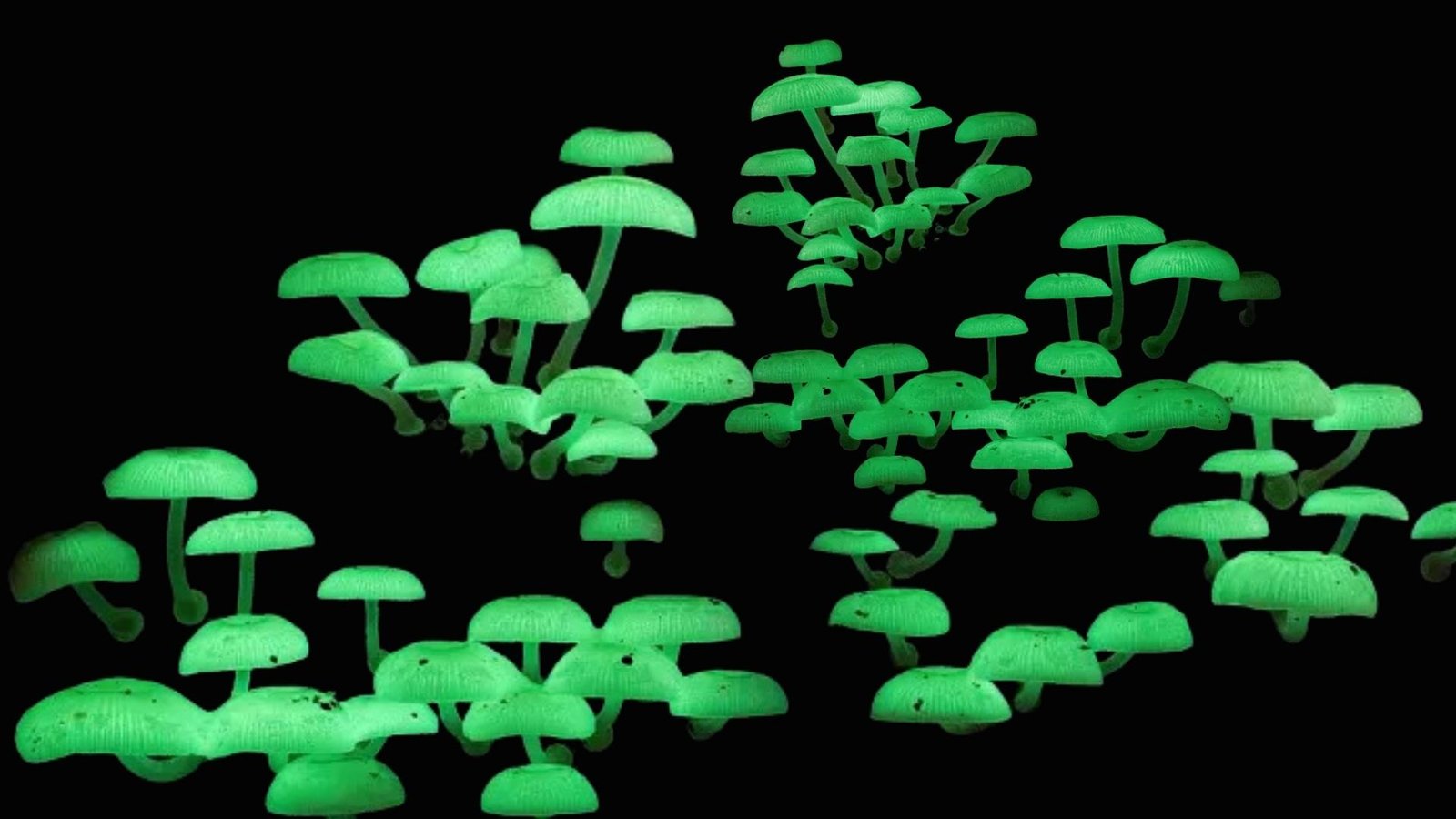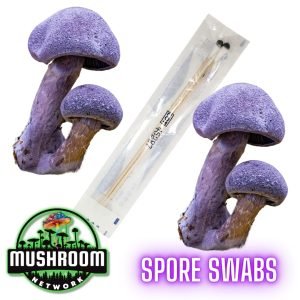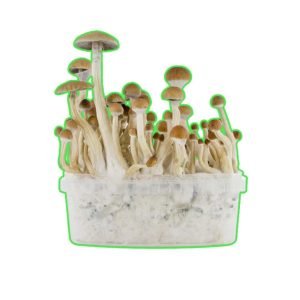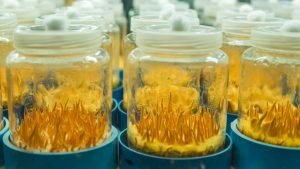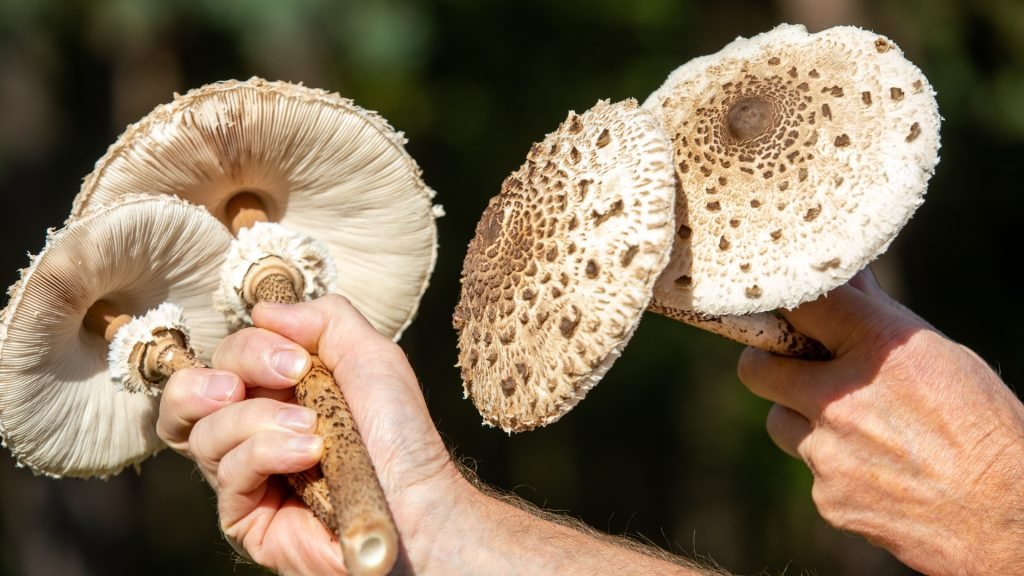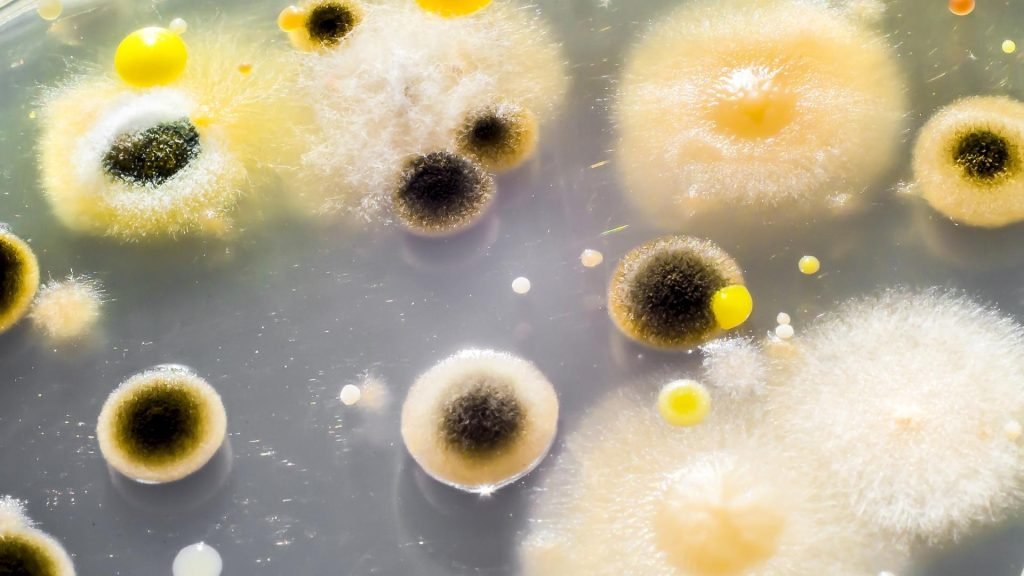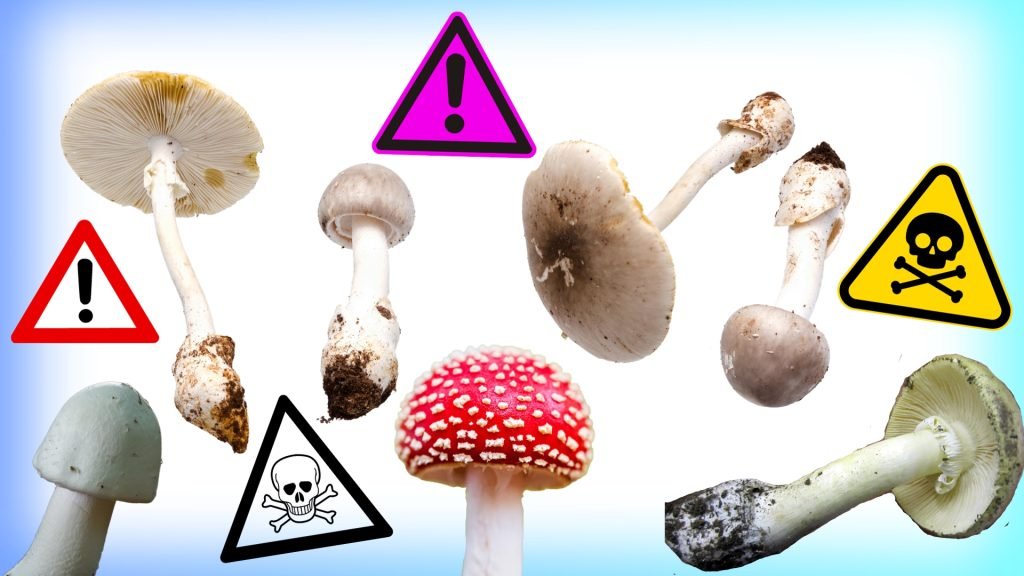In the quiet of the night, certain mushrooms unveil their mystical glow, illuminating the forest floor with a serene, ethereal light. This natural wonder, a marriage of biology and enchantment, has fascinated humans for centuries. As we delve into the world of bioluminescent fungi, we’ll unravel the science behind this luminosity, understanding its ecological significance and its potential to inspire art and design.
Delving Deeper:
Bioluminescent mushrooms are a testimony to nature’s capacity to surprise and intrigue. The fusion of chemistry, biology, and evolution that results in this phosphorescent spectacle is as much a scientific marvel as it is a poetic vision.
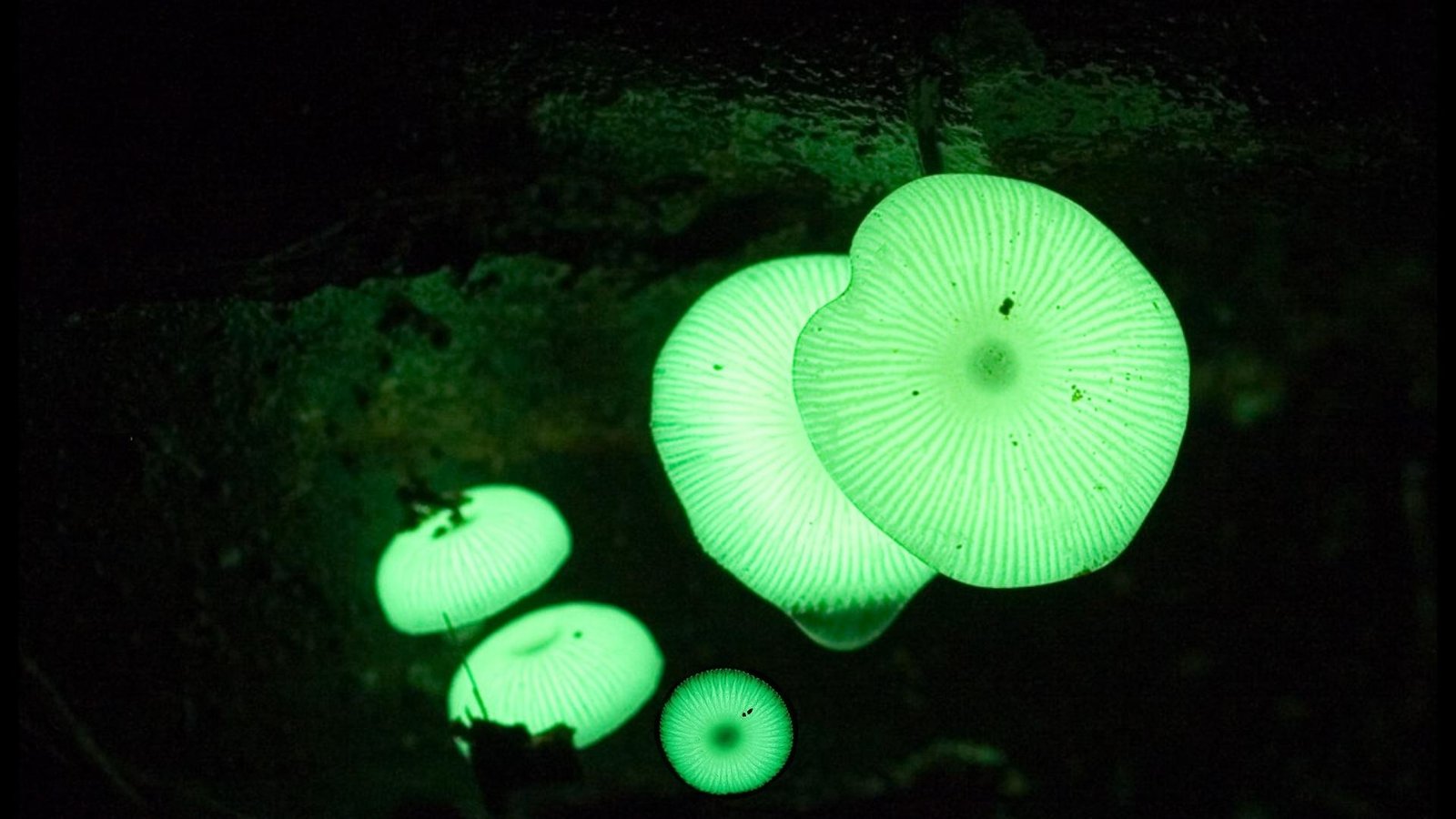
The Science of Bioluminescence:
Bioluminescence is the result of a chemical reaction that produces light energy within an organism. In mushrooms, this reaction involves a light-emitting pigment known as luciferin and an enzyme, luciferase. When these compounds interact in the presence of oxygen, they produce oxyluciferin, which emits light.
Omphalotus Oearius, the Jack-O’-Lantern mushroom, stands as a classic example. Native to parts of North America and Europe, this orange-to-yellow mushroom emits a soft greenish glow from its gills and cap. While captivating to the human eye, this light serves a distinct ecological purpose, potentially aiding in spore dispersal by attracting insects.
Mycena Chlorophos, the Glowing Mycena, native to subtropical Asia, is another intriguing specimen. These tiny fungi emit a brighter light compared to many of their luminescent peers. Interestingly, the intensity of their glow is temperature-dependent, peaking at around 21°C (70°F).
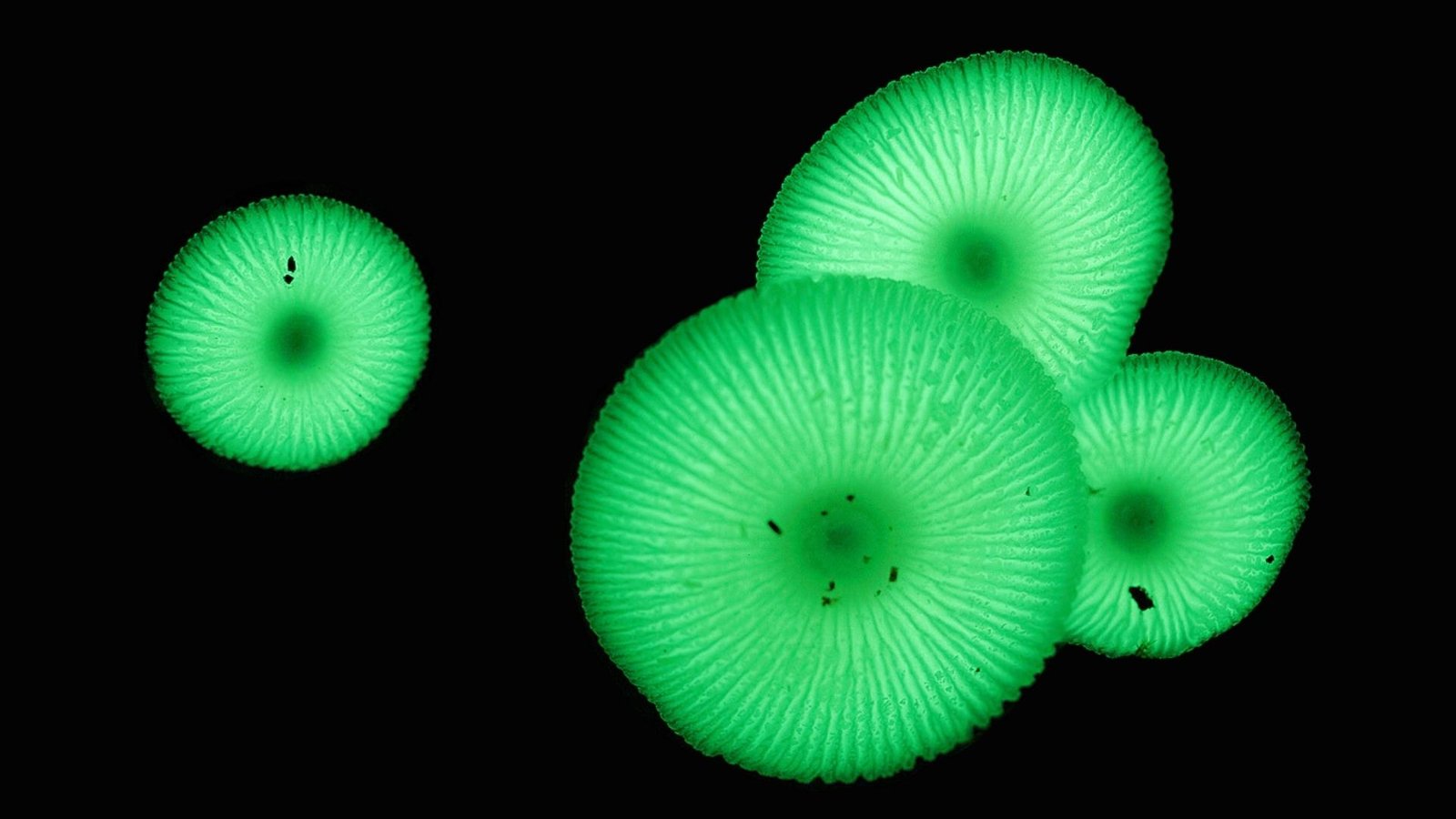
Ecological Roles of Bioluminescent Mushrooms:
While the precise ecological function of bioluminescence in fungi remains a subject of study, some theories have garnered significant attention. One prominent theory is that the glow attracts nocturnal insects and other creatures, which subsequently aid in spore dispersal.
In the case of the Jack-O’-Lantern mushroom, the luminescence could serve as a warning. Despite its alluring appearance, this mushroom is toxic to humans, causing severe gastrointestinal distress if ingested. The glow might deter potential predators or serve as a beacon for creatures that can safely consume it.
The Glowing Mycena’s luminescence may similarly play roles in both attraction and deterrence. In the dense forests where they thrive, their glow can be strikingly conspicuous, guiding insects and other organisms.
The universe of mushrooms is expansive, each variant bearing its own unique charm and characteristics. The Marketplace on the 🍄 Mushroom Network is a testament to this diversity. It is a haven for those seeking a deeper understanding of the magical world of mushrooms. If you’re keen on learning more about this type of mushroom and other mushroom variants, this Marketplace is your ultimate resource.
Glowing Mushrooms in Art and Design:
The magic of bioluminescent fungi hasn’t escaped the realms of art and design. Artists, inspired by the natural glow of these mushrooms, have incorporated their patterns and lights into various mediums, from paintings to installations.
Imagine a canvas depicting a moonlit forest, punctuated with the soft, greenish glow of Jack-O’-Lantern mushrooms, or a sculpture imitating the delicate caps of Glowing Mycena, using LED lights to mimic their natural luminescence.
Beyond traditional art forms, bioluminescent fungi are making their mark in contemporary design as well. Consider ambient lighting solutions for homes or gardens, inspired by these glowing wonders, or bio-luminescent installations in urban spaces, bringing a touch of forest magic to the concrete jungle.
Not sure where to start? The 🍄 Mushroom Academy offers a wide range of courses tailored to your needs. Whether you’re a beginner eager to learn or an experienced mycologist looking to broaden your knowledge, the 🍄 Academy has something for everyone.
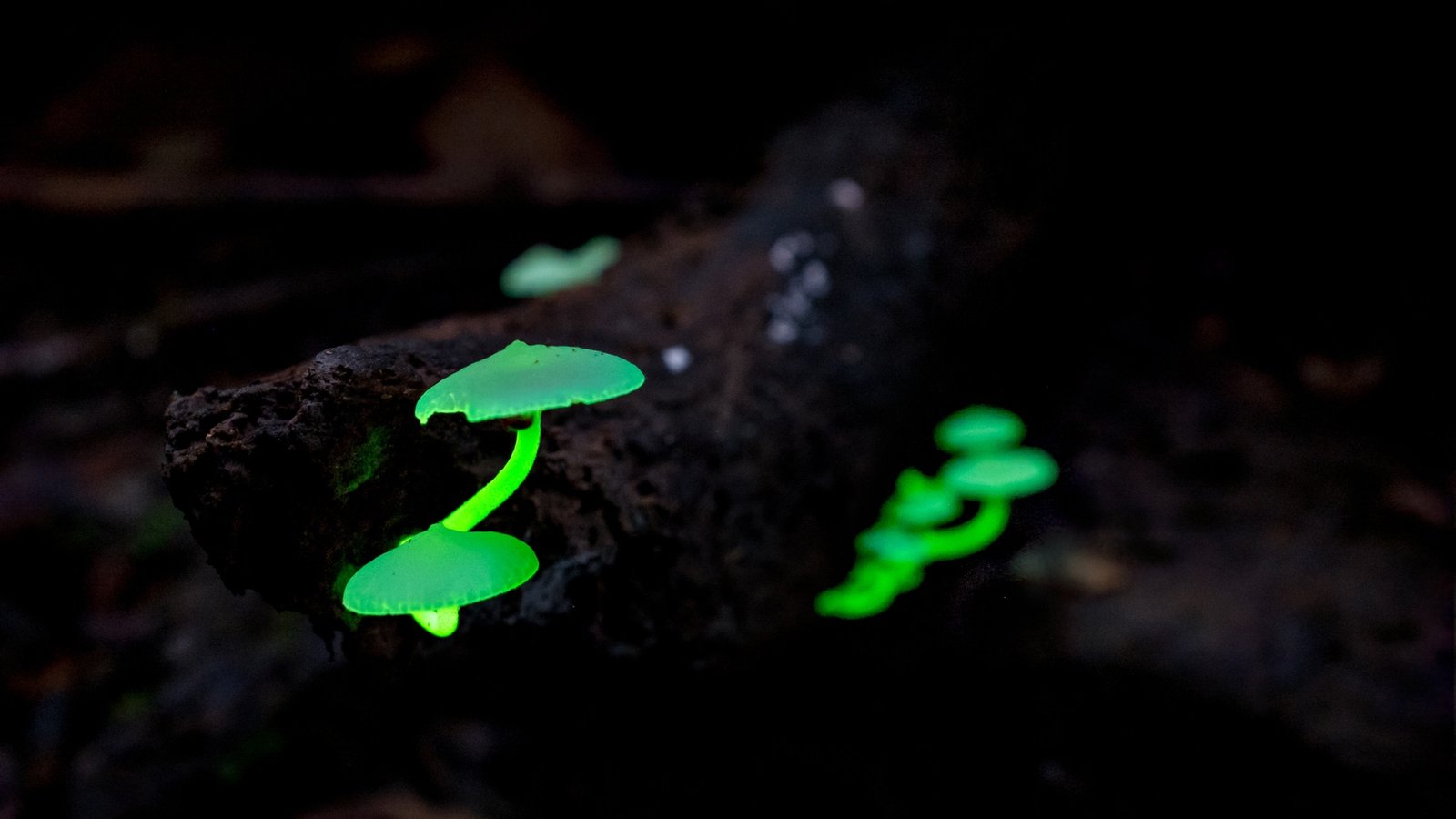
Luminous Conclusions:
Bioluminescent mushrooms, with their blend of science and enchantment, serve as a testament to nature’s inexhaustible ability to amaze. As we step back from this illuminating journey, we are reminded that even in the darkest corners of our world, there exists a light, often unseen but always present, waiting to be discovered.
Don’t forget to check out the 🍄 Mushroom Network’s Marketplace to see what’s available. But hurry, our shelves are constantly evolving, and you wouldn’t want to miss out on this wonderful mushroom. Join our growing network of Patrons, Genetics, and Mycologist Vendors only on the 🍄 Mushroom Network!
Recommended Reads:
The Psychedelic Potential of Psilocybe Cubensis B+: A Closer Look at the Research
Aiding mental health with mushrooms might seem like a thing of fantasy, but with B+...
Read More...The Psychedelic Canvas – How Mushrooms Shape Artistic Expression
About This Article: This article explores the connection between mushrooms and artistic expression, focusing on...
Read More...Cooking with Cordyceps: Culinary Adventures in Medicinal Mycology
Mycology, the study of fungi, has long fascinated humanity for its diverse range of applications....
Read More...Mushrooms of the Tropics: Spotlight on Blue Meanies
About This Article: 🍄 Dive into the mystical world of Blue Meanies (Panaeolus cyanescens) with...
Read More...Whoa there, Spore Sport! 🍄 Looks like you’re not logged in yet. Don’t you know what you’re missing? MYCO-CREDITS! Imagine all the fungal fun you could have. It’s like finding a Morel in May and not picking it. Tragic, right? Log In or Become a Myco-Patron and start racking up those credits. It’s more rewarding than finding a mushroom in your backyard! 🌟🏡

